Pilot Error After ‘Sierra Hotel [SH-T HOT] Break’ F-35C Crash
’Infamous Melbourne'?
Thread Starter
Join Date: Jul 2008
Location: Australia OZ
Age: 75
Posts: 2,584
Likes: 0
Received 52 Likes
on
45 Posts
I can see how a point of view may see 'infamous' may be used depending upon viewpoint. 'Numerous other collisions' what were these pray tell? How many crew members killed (aboard HMAS Melbourne?). 'Lost aircraft' what does that mean and how many? Then of course apart from 'collisions with destroyers (not fault of the carrier steaming on flying course at night) one would need to have some comparison with other carriers and their statistics. 'Never fired a shot in anger'? Good one. Still we have no idea of your own naval aviation experience.
Still we have no idea of your own naval aviation experience
Night, blue water operation, big deck pitch, only alternate Martin Baker. Stress, nah.

Day time, night is better, you can't see.

Thread Starter
Join Date: Jul 2008
Location: Australia OZ
Age: 75
Posts: 2,584
Likes: 0
Received 52 Likes
on
45 Posts
Very interesting. Meanwhile PHANTOM FG Mk 1 Aircrew Manual Oct 1969
https://www.filefactory.com/file/288...w%20Manual.pdf (27Mb)
"...Approach and Landing
9. Complete the Checks Before Landing when down-wind or as appropriate to CCA. In high ambient temperatures, fly a wide circuit to avoid excursion in and out of "7th at MIL" during the final turn.
10. The aircraft should be established on the centreline and glide path as early as possible and maintained on the glide path with small throttle movements. During the final stages of the approach, the airflow aft of the carrier can induce some loss of speed and/or height, and every effort must therefore be made to avoid being below the glide path or too slow at this stage in the approach. Datum approach speed should normally be maintained by reference to the AOA system, attempting to hold 19 units AOA which should correspond to the middle of the steady note on the audio AOA system. This should give an indicated approach speed of 140 KCAS at 38,000 lb., decreasing by 2 knots per 1,000 lb. decrease in AUW. The KCAS reading for an "on speed" AOA reading may differ by up to 4 knots from the above datum approach speed due to errors in the CADC system.
12. Carry out the Checks After Landing. If the flaps are left in the full down position, closely monitor TGT's particularly when increasing power.
13. Wave-Off. For a two engine wave-off, slam to MIL power and maintain 19-20 units AOA to climb away attitude. For single engine wave-off, slam to MAX reheat and rotate to hold 19-20 units AOA to climb away attitude. Approximately 1/3 rudder is needed to compensate for the asymmetric thrust at MAX reheat. This is particularly important with a reheated port engine to avoid getting too close to the island.
14. Bolter. For a bolter, slam to MIL power (two engines) or MAX reheat (one engine) as soon as it is clear the wire has not been hooked. Attempt to raise the nose on deck by using about ¾ aft stick. If the nose does not come up, it is important that the aircraft should not leave the end of the deck with full back stick applied as this can lead to over-rotation when in free air. Rotate the aircraft to flying attitude by reference to the ADI, the optimum being 14° true attitude. At no time during the rotation should reference be made to the AOA as the system lag can cause serious under-reading...."
https://www.filefactory.com/file/288...w%20Manual.pdf (27Mb)
"...Approach and Landing
9. Complete the Checks Before Landing when down-wind or as appropriate to CCA. In high ambient temperatures, fly a wide circuit to avoid excursion in and out of "7th at MIL" during the final turn.
10. The aircraft should be established on the centreline and glide path as early as possible and maintained on the glide path with small throttle movements. During the final stages of the approach, the airflow aft of the carrier can induce some loss of speed and/or height, and every effort must therefore be made to avoid being below the glide path or too slow at this stage in the approach. Datum approach speed should normally be maintained by reference to the AOA system, attempting to hold 19 units AOA which should correspond to the middle of the steady note on the audio AOA system. This should give an indicated approach speed of 140 KCAS at 38,000 lb., decreasing by 2 knots per 1,000 lb. decrease in AUW. The KCAS reading for an "on speed" AOA reading may differ by up to 4 knots from the above datum approach speed due to errors in the CADC system.
WARNING:
Distortion of the audio tone may occur if XMTR is selected with either the pilot's or observer's V/UHF control selector switched to T/R +G.
11. Maintain approach power after touchdown until a positive arrestment is felt. Throttles may be slammed to MIL power after touchdown under certain conditions specified in the current NAD diagrams. Touchdown short of the wires (particularly with high sink rates) increases the probability of hook skip over the wires.Distortion of the audio tone may occur if XMTR is selected with either the pilot's or observer's V/UHF control selector switched to T/R +G.
12. Carry out the Checks After Landing. If the flaps are left in the full down position, closely monitor TGT's particularly when increasing power.
13. Wave-Off. For a two engine wave-off, slam to MIL power and maintain 19-20 units AOA to climb away attitude. For single engine wave-off, slam to MAX reheat and rotate to hold 19-20 units AOA to climb away attitude. Approximately 1/3 rudder is needed to compensate for the asymmetric thrust at MAX reheat. This is particularly important with a reheated port engine to avoid getting too close to the island.
14. Bolter. For a bolter, slam to MIL power (two engines) or MAX reheat (one engine) as soon as it is clear the wire has not been hooked. Attempt to raise the nose on deck by using about ¾ aft stick. If the nose does not come up, it is important that the aircraft should not leave the end of the deck with full back stick applied as this can lead to over-rotation when in free air. Rotate the aircraft to flying attitude by reference to the ADI, the optimum being 14° true attitude. At no time during the rotation should reference be made to the AOA as the system lag can cause serious under-reading...."
And, strangely enough, that exact technique was used for both carrier and runway landings, even after the K was withdrawn from carrier use, with the exception of retarding the throttles after touchdown or cable engagement and use of the break chute.
Thread Starter
Join Date: Jul 2008
Location: Australia OZ
Age: 75
Posts: 2,584
Likes: 0
Received 52 Likes
on
45 Posts
Was your runway moving with 6 Degrees of Freedom? Was an LSO watching your every approach and grading same?
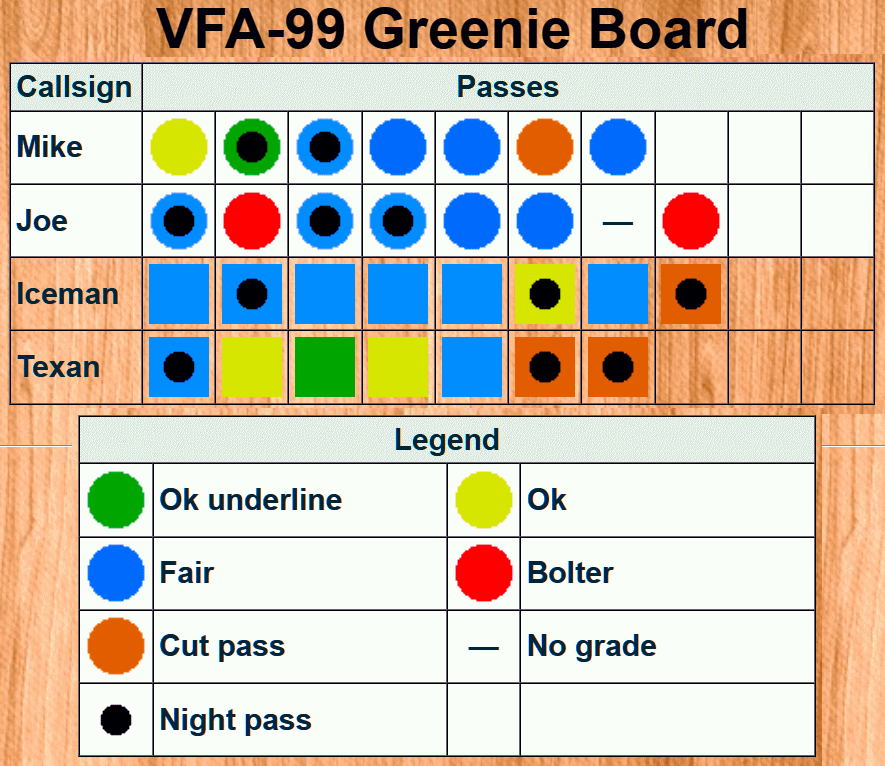
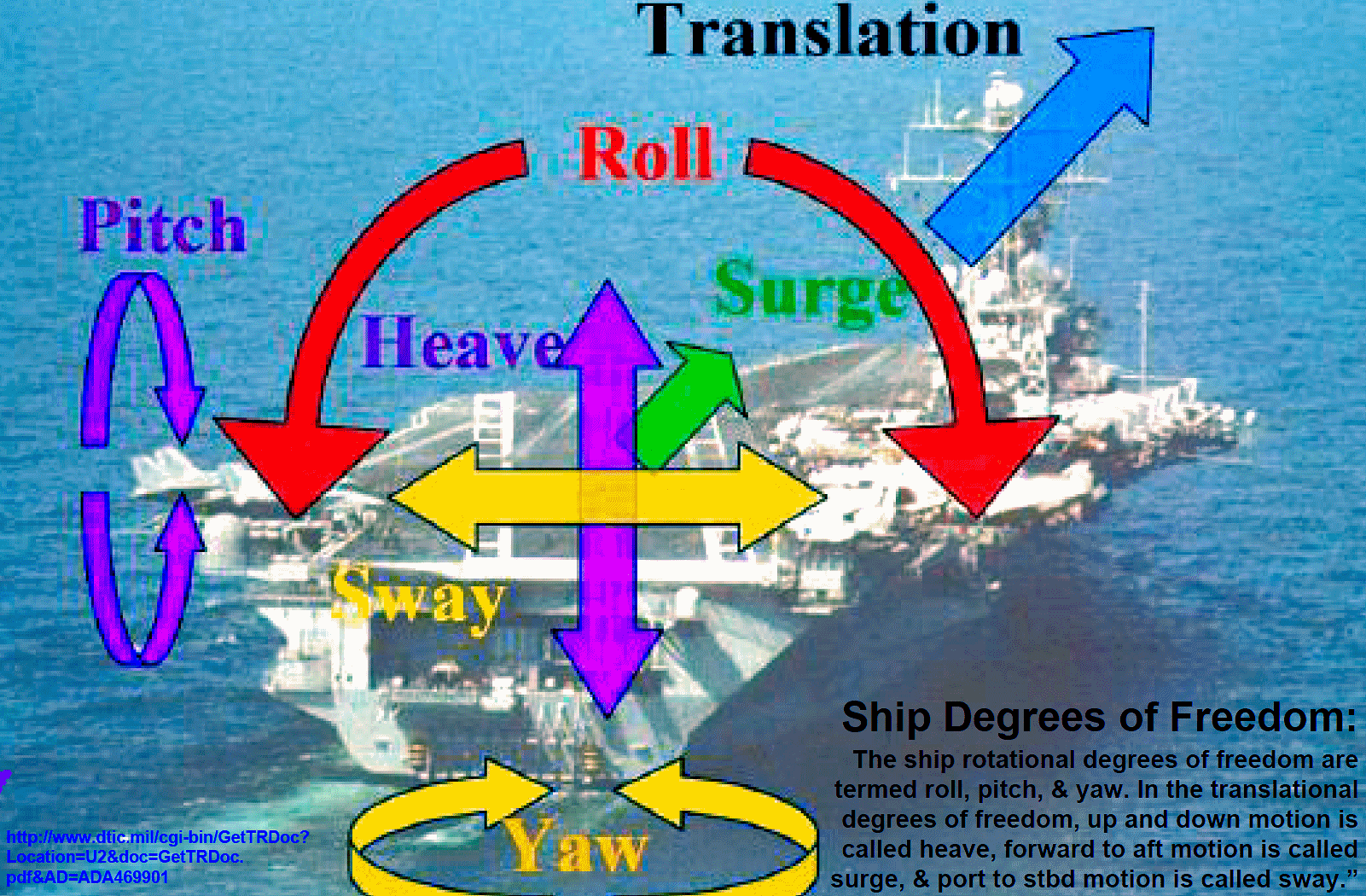


Last edited by SpazSinbad; 6th Mar 2023 at 09:24.
Thread Starter
Join Date: Jul 2008
Location: Australia OZ
Age: 75
Posts: 2,584
Likes: 0
Received 52 Likes
on
45 Posts
Did you get to take off in this manner? PHANTOM FG Mk 1 Aircrew Manual Oct 1969
https://www.filefactory.com/file/288...w%20Manual.pdf (27Mb)
"...Catapult Launch
4. Stick Positioning Device (SPD). The stabilator settings are given in Part 2, Chapter 2, Figs. 2 and 3. The SPD should be set with reference to the stabilator position marks on the fuselage (Mod. 206).
5. The importance of setting the correct stabilator angle for launch is strongly emphasised. The optimum setting results in a gentle nose-up rotation 1 second after launch which is easily checked at the fly-away attitude with a small forward stick movement. Incorrect use of the SPD (incorrect stabilator position), could lead to high pitch rates developing, resulting in a hazardous launch.
6. The SPD clutch allows wire pull out at a force between 50-55 lb on the wire. During catapult launch, wire tension up to 45 lb may occur due to the lack of mass balance in the control column. Therefore avoid pulling hard back against the wire during launch but maintain a light tension.
1. Launch Procedure
a. Carry out the Catapult Checks in the FRc's. Set the SPD to give approximately the correct stabilator angle and then check that the SPD friction clutch can be overridden. Reset the SPD to the correct stabilator angle. With the NLG extended and flaps fully down, at less than MIL RPM the L and R ENGINE BLEED captions must be on. Once MIL power is achieved the L and R ENGINE BLEED captions should go out. After the aircraft is tensioned and on signal from FDO, open up smoothly to MIL power and check that the nozzles are closed and the TGT, HP RPM and LP RPM are within limits and all warning lights out. If reheat is to be used, select MAX reheat and check the nozzles go to pre-open and then to ½-¾ open.
b. If full flaps are selected down before going on the catapult, high TGT's may be reached and the gauge should be closely monitored.
c. The aircraft should not be taxied with the nose gear extended.
d. In conditions of high temperature and humidity, the EMERG VENT knob should be left in vent for launch to avoid the cockpit misting up.
e. The fuel transfer selector is placed to STOP to avoid external tank collapse during acceleration and the fuel transfer pressure switch is set to ON to stop fuel spillage.
Launch Technique. Hold the stick back against the wire, with the elbow braced to prevent excessively high loads being applied. Hold this position through the nose-down "nod" (which may occur immediately on leaving the end of the deck) until the ADI indicates nose rise, when the stick should be checked forward to stop the aircraft rotation at an attitude of 14° nose-up. Establish a climb away and after passing 200 ft. raise the undercarriage and flaps. Complete the Checks After Take-off in the FRc's.
WARNING 1: Due to the lag in the system, the AOA (audio, visual and rudder shaker) must not be relied upon during launch and the initial climb away.
WARNING 2: A true nose-up attitude of 14° should not be exceeded during launch. Be prepared to check forward immediately if a rapid nose-up rotation is observed.
WARNING 3: If insufficient nose-up trim is inadvertently set prior to launch, the expected nose rise will not take place and excessive height loss could occur without some corrective action. In this case override the SPD with a pull force of approximately 42 lb. and then rotate to hold an attitude of 14° nose-up.
WARNING 4: The use of rudder to correct a wing drop on launch may result in overcontrolling and an excessive nose-up pitch rate. For this reason, if the aircraft starts to roll at any time in the post launch phase (due to crosswind or asymmetric stores) it should be corrected primarily with aileron, rudder being used only if aileron is not effective. However, the use of full left aileron is not recommended as this causes a loss of stabilator angle of 7° (4° post mod 273) owing to the stick being constrained to move along the arc of a circle by the SPD wire. Full right aileron causes a loss of only 1° (2·5° post mod 273) stabilator angle...."
https://www.filefactory.com/file/288...w%20Manual.pdf (27Mb)
"...Catapult Launch
4. Stick Positioning Device (SPD). The stabilator settings are given in Part 2, Chapter 2, Figs. 2 and 3. The SPD should be set with reference to the stabilator position marks on the fuselage (Mod. 206).
5. The importance of setting the correct stabilator angle for launch is strongly emphasised. The optimum setting results in a gentle nose-up rotation 1 second after launch which is easily checked at the fly-away attitude with a small forward stick movement. Incorrect use of the SPD (incorrect stabilator position), could lead to high pitch rates developing, resulting in a hazardous launch.
6. The SPD clutch allows wire pull out at a force between 50-55 lb on the wire. During catapult launch, wire tension up to 45 lb may occur due to the lack of mass balance in the control column. Therefore avoid pulling hard back against the wire during launch but maintain a light tension.
1. Launch Procedure
a. Carry out the Catapult Checks in the FRc's. Set the SPD to give approximately the correct stabilator angle and then check that the SPD friction clutch can be overridden. Reset the SPD to the correct stabilator angle. With the NLG extended and flaps fully down, at less than MIL RPM the L and R ENGINE BLEED captions must be on. Once MIL power is achieved the L and R ENGINE BLEED captions should go out. After the aircraft is tensioned and on signal from FDO, open up smoothly to MIL power and check that the nozzles are closed and the TGT, HP RPM and LP RPM are within limits and all warning lights out. If reheat is to be used, select MAX reheat and check the nozzles go to pre-open and then to ½-¾ open.
b. If full flaps are selected down before going on the catapult, high TGT's may be reached and the gauge should be closely monitored.
c. The aircraft should not be taxied with the nose gear extended.
d. In conditions of high temperature and humidity, the EMERG VENT knob should be left in vent for launch to avoid the cockpit misting up.
e. The fuel transfer selector is placed to STOP to avoid external tank collapse during acceleration and the fuel transfer pressure switch is set to ON to stop fuel spillage.
Launch Technique. Hold the stick back against the wire, with the elbow braced to prevent excessively high loads being applied. Hold this position through the nose-down "nod" (which may occur immediately on leaving the end of the deck) until the ADI indicates nose rise, when the stick should be checked forward to stop the aircraft rotation at an attitude of 14° nose-up. Establish a climb away and after passing 200 ft. raise the undercarriage and flaps. Complete the Checks After Take-off in the FRc's.
WARNING 1: Due to the lag in the system, the AOA (audio, visual and rudder shaker) must not be relied upon during launch and the initial climb away.
WARNING 2: A true nose-up attitude of 14° should not be exceeded during launch. Be prepared to check forward immediately if a rapid nose-up rotation is observed.
WARNING 3: If insufficient nose-up trim is inadvertently set prior to launch, the expected nose rise will not take place and excessive height loss could occur without some corrective action. In this case override the SPD with a pull force of approximately 42 lb. and then rotate to hold an attitude of 14° nose-up.
WARNING 4: The use of rudder to correct a wing drop on launch may result in overcontrolling and an excessive nose-up pitch rate. For this reason, if the aircraft starts to roll at any time in the post launch phase (due to crosswind or asymmetric stores) it should be corrected primarily with aileron, rudder being used only if aileron is not effective. However, the use of full left aileron is not recommended as this causes a loss of stabilator angle of 7° (4° post mod 273) owing to the stick being constrained to move along the arc of a circle by the SPD wire. Full right aileron causes a loss of only 1° (2·5° post mod 273) stabilator angle...."
The SPD was a piece of string in the Ks. Thanks for keeping on sending me extracts from the FG1 Aircrew Manual, but I have my own copy - more up to date than the version you’ve found on line. A lot of the CADC and aoa issues were modded out since 1969.
The following users liked this post:
Hi Courtney Mil - hope life's treating you well in France?
Did you have audio AoA in the FG1? I don't recall it in the FGR2, just the gauge and chevron indicators. We had audio AoA in the Bucc and it was very good!
Did you have audio AoA in the FG1? I don't recall it in the FGR2, just the gauge and chevron indicators. We had audio AoA in the Bucc and it was very good!
The following users liked this post:
Thread Starter
Join Date: Jul 2008
Location: Australia OZ
Age: 75
Posts: 2,584
Likes: 0
Received 52 Likes
on
45 Posts
Extracts from manuals are used for my purposes to end up in the BIG PDF. Nice that you avoid questions. Did your runways move from left to right during your approach? Did your runways have a burble? NAS Nowra had a notorious downdraught on RW 26 (now closed for good in the helo era it seems). This downdraught even caught out visitors despite being warned by the tower.
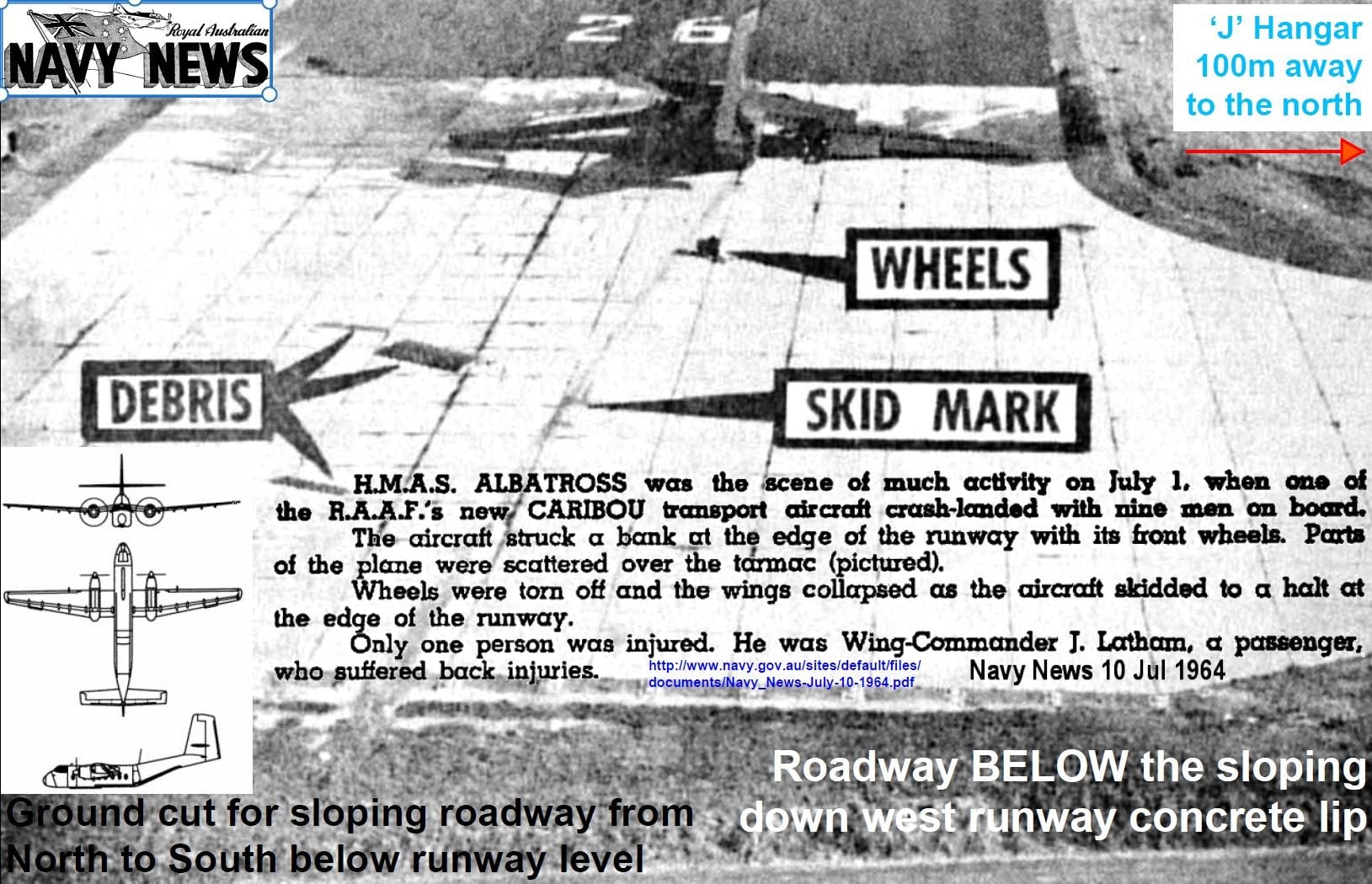
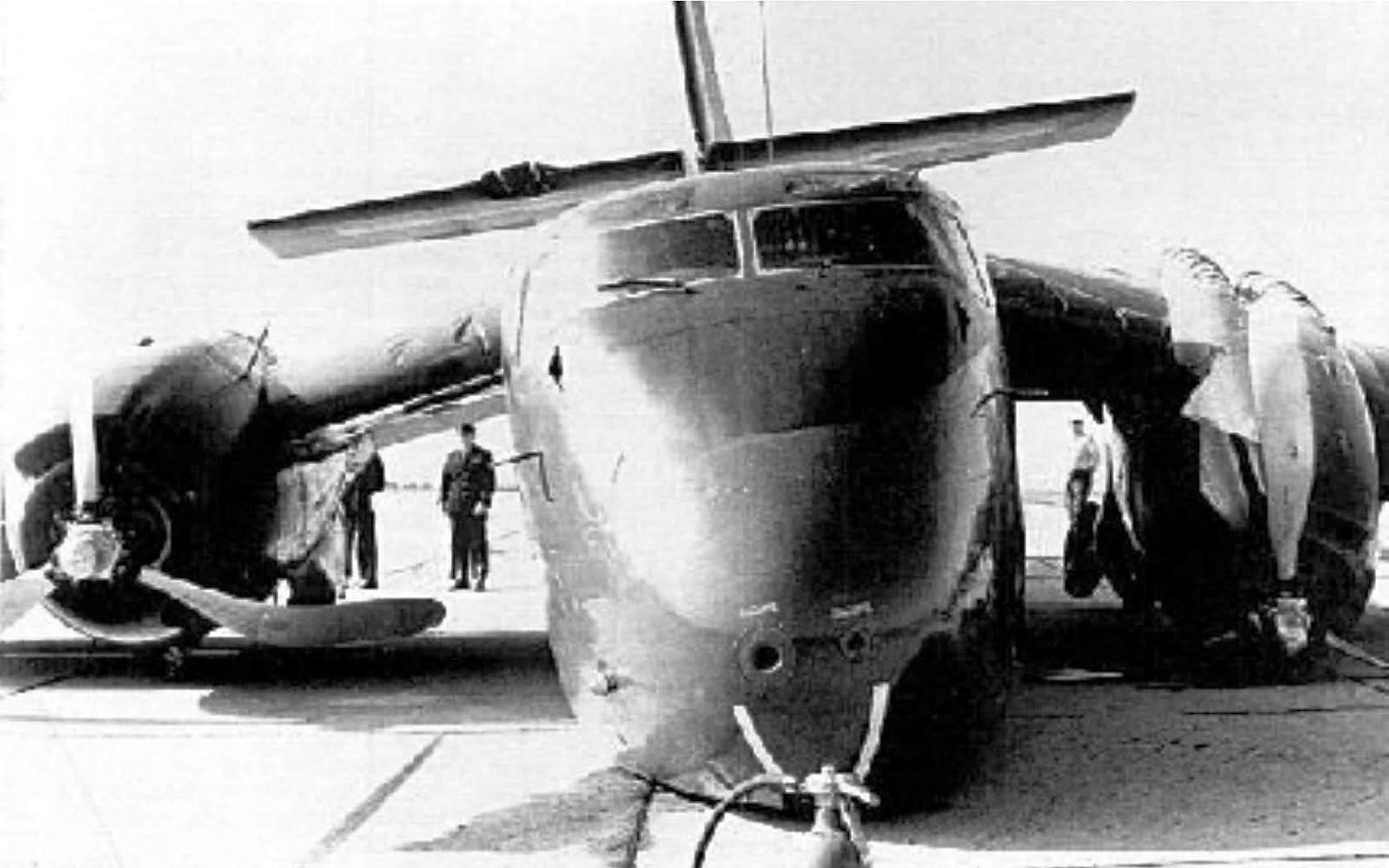


Thread Starter
Join Date: Jul 2008
Location: Australia OZ
Age: 75
Posts: 2,584
Likes: 0
Received 52 Likes
on
45 Posts
For the fearless readers in this forum there is a lot more at the URL and an audio file and stuff: Official apology for HMAS Melbourne captain 06 Dec 2012 https://www.abc.net.au/news/2012-12-...bourne/4413638
"...In June 1969, 74 American navy personnel died when the USS Frank E Evans collided with the Australian aircraft carrier during exercises off the coast of the Philippines. Although blameless, the commander of HMAS Melbourne, John Stevenson, was made the scapegoat for the accident. Mr Stevenson, 91, has just received a letter from the Defence Minister finally acknowledging he was "not treated fairly" by the government of the day and the Australian Navy...."
"...In June 1969, 74 American navy personnel died when the USS Frank E Evans collided with the Australian aircraft carrier during exercises off the coast of the Philippines. Although blameless, the commander of HMAS Melbourne, John Stevenson, was made the scapegoat for the accident. Mr Stevenson, 91, has just received a letter from the Defence Minister finally acknowledging he was "not treated fairly" by the government of the day and the Australian Navy...."
Extracts from manuals are used for my purposes to end up in the BIG PDF. Nice that you avoid questions. Did your runways move from left to right during your approach? Did your runways have a burble? NAS Nowra had a notorious downdraught on RW 26 (now closed for good in the helo era it seems). This downdraught even caught out visitors despite being warned by the tower.




Thread Starter
Join Date: Jul 2008
Location: Australia OZ
Age: 75
Posts: 2,584
Likes: 0
Received 52 Likes
on
45 Posts
Good to know. Google Earth overhead photo had it marked with X X Xs for a long time. I'm guessing the short/long field arrestor gear has been removed?
Hi, Beags. Yes all is great, thanks. And you?
yes, we had audio aoa in the FG1, but never fitted to the FGR2. We still had the indexers and the gauge. It was brilliant; such a shame the 2 didn’t get it. Apart from a couple of cross checks, you could fly the whole approach looking outside. And the other good thing was, if you relied on it, you couldn’t attempt to fly a wheels up approach.
yes, we had audio aoa in the FG1, but never fitted to the FGR2. We still had the indexers and the gauge. It was brilliant; such a shame the 2 didn’t get it. Apart from a couple of cross checks, you could fly the whole approach looking outside. And the other good thing was, if you relied on it, you couldn’t attempt to fly a wheels up approach.
Thread Starter
Join Date: Jul 2008
Location: Australia OZ
Age: 75
Posts: 2,584
Likes: 0
Received 52 Likes
on
45 Posts
Earlier "P-25 mobile fire fighting vehicle (MFFV)" was mentioned pic shows the VEHICKLE nearby a "VAQ-140 EA-18G Growler launching from USS George H.W. Bush CVN-77"
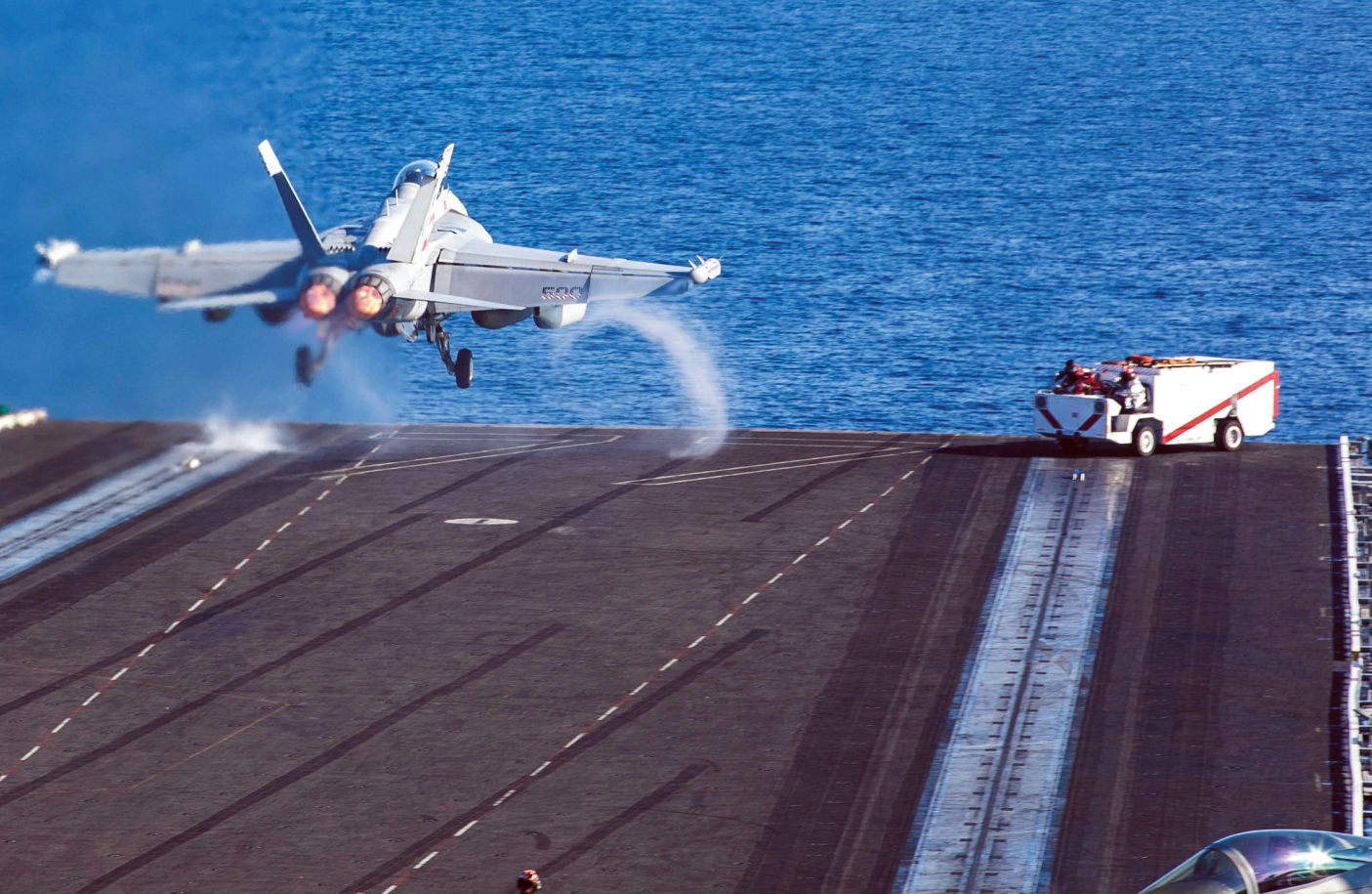
“160428-N-UD666-386 PACIFIC OCEAN (Apr. 28, 2016) USS Carl Vinson (CVN 70) air department Sailors assigned to the crash and salvage team test the aqueous film forming foam (AFFF) nozzle on a P-25 mobile fire fighting vehicle (MFFV) in the hangar bay. Carl Vinson is underway conducting sea trials off the coast of Southern California. (U.S. Navy Photo by Mass Communication Specialist Seaman Apprentice Daniel P. Jackson Norgart/Released)” https://allhands.navy.mil/Media/Gall...to/2002417115/
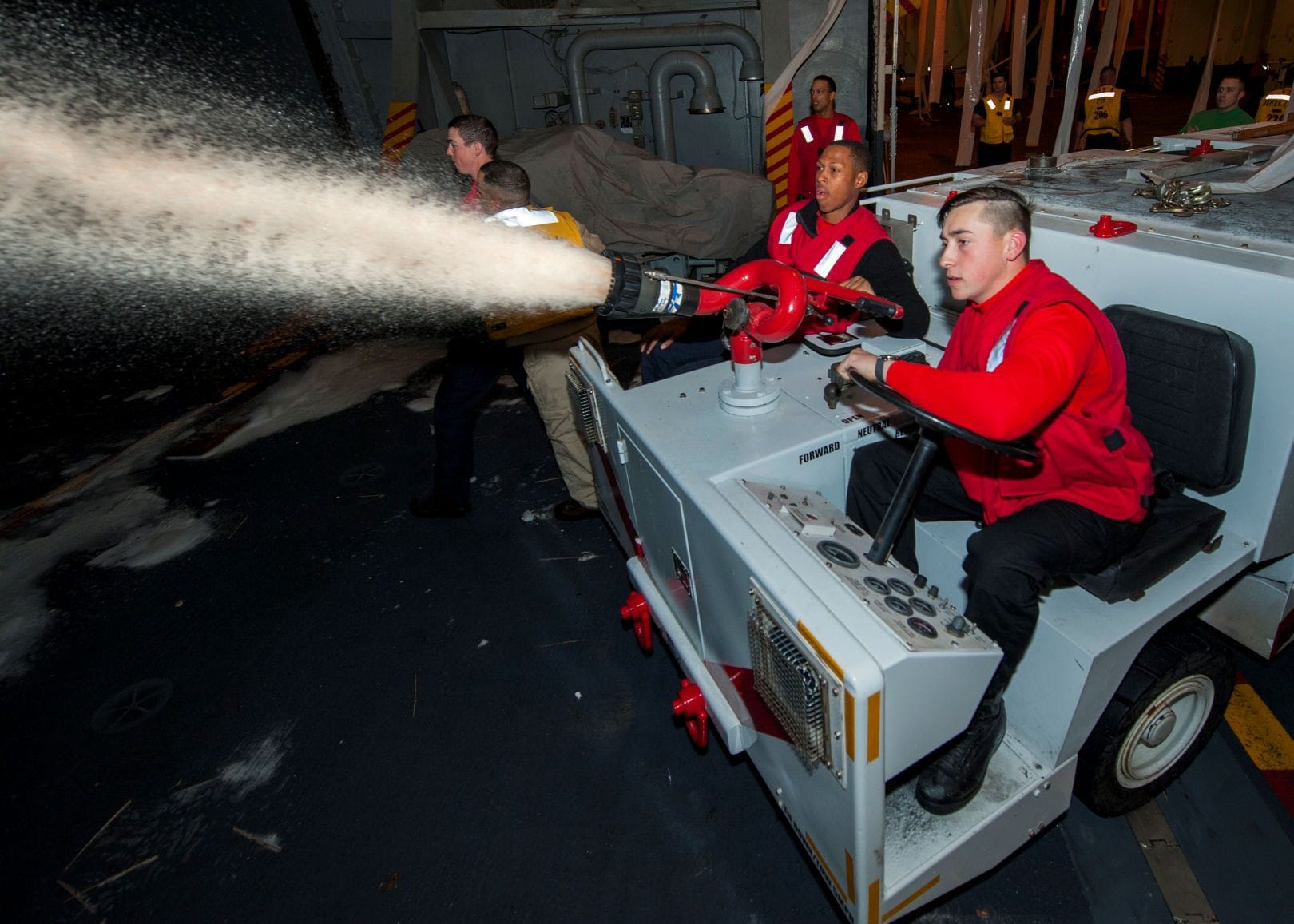

“160428-N-UD666-386 PACIFIC OCEAN (Apr. 28, 2016) USS Carl Vinson (CVN 70) air department Sailors assigned to the crash and salvage team test the aqueous film forming foam (AFFF) nozzle on a P-25 mobile fire fighting vehicle (MFFV) in the hangar bay. Carl Vinson is underway conducting sea trials off the coast of Southern California. (U.S. Navy Photo by Mass Communication Specialist Seaman Apprentice Daniel P. Jackson Norgart/Released)” https://allhands.navy.mil/Media/Gall...to/2002417115/

Thread Starter
Join Date: Jul 2008
Location: Australia OZ
Age: 75
Posts: 2,584
Likes: 0
Received 52 Likes
on
45 Posts
[F-4K Phantom Ramp Strike] Aircrew Testimony, Mark Jenkins, July 2007 http://www.phantomf4k.org/index.cfm
“This incident may have led to a hull loss but I don't know, there was some talk of grafting the front end to another wrecks back end.
Ark Royal was working up off the west coast of Scotland. The weather was foul with low cloud and a rough sea. We were launched for a night AI sortie just after dusk. The sortie was routine and we were vectored back for a CCA. All the way down the glideslope was thick cloud but just at minimums we broke out underneath to see the deck almost horizontal with a very red meatball. There were shouts of "power" from all sides but the Phantom's spool up time was very slow. Eventually the nose came up and I lost sight of the deck but before that I had a distinct impression of looking UP at the red light on the end of the round-down.
A thump as we hit the deck followed. Being an ex-Vixen observer I was used to judging a landing by the noise, as we had no other input. I had experienced a few landings where an oleo collapsed and this landing sounded similar except the graunching noise came from the back. I was sure we had made a ramp strike. As we boltered down the deck flyco ordered us to go round and do another CCA. I did not want to obey this order and persuaded the pilot to divert ashore.
On the way I was getting nervous that I might have over-reacted but I was slightly re-assured when we had a runaway nose down trim that has us diving for the sea. I was even happier when, after landing gingerly at Lossiemouth, I inspected the aircraft and found the whole underside of the tail severely dented with the hook having been rammed right up inside the empennage. When they stripped the aircraft down they found every rib and stringer broken with only the skin panels holding the tail on. Had we attempted another deck landing with the tail in this condition the results would probably have been disastrous.
There was no word from the ship asking how we had got on or how we were to get back, so eventually we bummed a ride on a supply ship heading to the carrier. As I climbed back on board I was feeling quite good that I had saved the Navy an aeroplane & possibly two crew but I was quickly disabused of this with a ferocious rocket from the CO for disobeying flyco followed by "and what took you so long to get back?". My name was mud thereafter. I wandered to the back of the ship and, while viewing the large rip we had taken out of the lip of the roundown and the dents in the deck, I pondered the strange ways of senior Naval Officers.”
“This incident may have led to a hull loss but I don't know, there was some talk of grafting the front end to another wrecks back end.
Ark Royal was working up off the west coast of Scotland. The weather was foul with low cloud and a rough sea. We were launched for a night AI sortie just after dusk. The sortie was routine and we were vectored back for a CCA. All the way down the glideslope was thick cloud but just at minimums we broke out underneath to see the deck almost horizontal with a very red meatball. There were shouts of "power" from all sides but the Phantom's spool up time was very slow. Eventually the nose came up and I lost sight of the deck but before that I had a distinct impression of looking UP at the red light on the end of the round-down.
A thump as we hit the deck followed. Being an ex-Vixen observer I was used to judging a landing by the noise, as we had no other input. I had experienced a few landings where an oleo collapsed and this landing sounded similar except the graunching noise came from the back. I was sure we had made a ramp strike. As we boltered down the deck flyco ordered us to go round and do another CCA. I did not want to obey this order and persuaded the pilot to divert ashore.
On the way I was getting nervous that I might have over-reacted but I was slightly re-assured when we had a runaway nose down trim that has us diving for the sea. I was even happier when, after landing gingerly at Lossiemouth, I inspected the aircraft and found the whole underside of the tail severely dented with the hook having been rammed right up inside the empennage. When they stripped the aircraft down they found every rib and stringer broken with only the skin panels holding the tail on. Had we attempted another deck landing with the tail in this condition the results would probably have been disastrous.
There was no word from the ship asking how we had got on or how we were to get back, so eventually we bummed a ride on a supply ship heading to the carrier. As I climbed back on board I was feeling quite good that I had saved the Navy an aeroplane & possibly two crew but I was quickly disabused of this with a ferocious rocket from the CO for disobeying flyco followed by "and what took you so long to get back?". My name was mud thereafter. I wandered to the back of the ship and, while viewing the large rip we had taken out of the lip of the roundown and the dents in the deck, I pondered the strange ways of senior Naval Officers.”
It would be useful if your link worked and pointed to the full final report. That appears to be exactly the kind of of incident that should have resulted in the pilot having his instrument and type ratings revoked pending further training and assessment. From what little you’ve provided, the main issue appears to be the instrument approach, not a carrier landing.
The pilot should have been fully familiar with runaway pitch trim and the spool up time of the Spey and the effects of 7th stage at Mil.
Sadly, you’ve just given a somewhat random link to a fraction of the full facts.
The pilot should have been fully familiar with runaway pitch trim and the spool up time of the Spey and the effects of 7th stage at Mil.
Sadly, you’ve just given a somewhat random link to a fraction of the full facts.
Last edited by Courtney Mil; 7th Mar 2023 at 21:25.
Thread Starter
Join Date: Jul 2008
Location: Australia OZ
Age: 75
Posts: 2,584
Likes: 0
Received 52 Likes
on
45 Posts
'CM': I'm amazed. I'm glad that the text was sent to me many moons ago with that link provided. Perhaps you can join the website and find the text yourself. You do not seem to add value here except your pronouncements. Perhaps you can explain to what you are referring. "From what little I have provided" (perhaps you do not understand) there was a rampstrike with dents in the roundown and 'broken' tail. Don't worry I find the memories fun of our AWIs (all trained at Lossimouth in my day) briefing / debriefing me.  Then there wuz the transferees from the RN - including AWIs - all having flown exotic machinery such as the Sea Vixen, Phantom and BUCKING EARs demonstrating/briefing their knowledge of Naval Aviation and weapon delivery and tactics.
Then there wuz the transferees from the RN - including AWIs - all having flown exotic machinery such as the Sea Vixen, Phantom and BUCKING EARs demonstrating/briefing their knowledge of Naval Aviation and weapon delivery and tactics.
BTW the text looks to me like the Observer, GIB (Guy in Back who tells the GIF to put the wheels down) telling a TINS (This Is No SH_T) tale about an RNFAA bigwig(s) reaction to a rampstrike and the events surrounding.
________________
'LAL': (or should it be 'LOL'?) Have YOU deck landed? The WOD is seldom straight down the angle deck centreline. Not that it mattered that much getting aboard HMAS Melbourne with a 5.5 degree angle deck (see video below). FLARE? :-) very funny - I was basic/advanced trained by the RAAF in 1968 so we had to FLARE the Winjeel and the Vampire. And of course we quite rightly flared the Vampire and Macchi MB326H back at NAS Nowra. An A4G Low/HIGH Precautionary approach as well as any landing with KIAS above the optimum (as seen on the indexer - or physically looking left/right to see the leading edge slats half extended) - often because of various issues when landing ashore, we would flare. I did not realise it was difficult.
Have YOU deck landed? The WOD is seldom straight down the angle deck centreline. Not that it mattered that much getting aboard HMAS Melbourne with a 5.5 degree angle deck (see video below). FLARE? :-) very funny - I was basic/advanced trained by the RAAF in 1968 so we had to FLARE the Winjeel and the Vampire. And of course we quite rightly flared the Vampire and Macchi MB326H back at NAS Nowra. An A4G Low/HIGH Precautionary approach as well as any landing with KIAS above the optimum (as seen on the indexer - or physically looking left/right to see the leading edge slats half extended) - often because of various issues when landing ashore, we would flare. I did not realise it was difficult. 
A4G Skyhawk 876 Approaches HMAS Melbourne to Deck Land
 Then there wuz the transferees from the RN - including AWIs - all having flown exotic machinery such as the Sea Vixen, Phantom and BUCKING EARs demonstrating/briefing their knowledge of Naval Aviation and weapon delivery and tactics.
Then there wuz the transferees from the RN - including AWIs - all having flown exotic machinery such as the Sea Vixen, Phantom and BUCKING EARs demonstrating/briefing their knowledge of Naval Aviation and weapon delivery and tactics.BTW the text looks to me like the Observer, GIB (Guy in Back who tells the GIF to put the wheels down) telling a TINS (This Is No SH_T) tale about an RNFAA bigwig(s) reaction to a rampstrike and the events surrounding.
________________
'LAL': (or should it be 'LOL'?)
 Have YOU deck landed? The WOD is seldom straight down the angle deck centreline. Not that it mattered that much getting aboard HMAS Melbourne with a 5.5 degree angle deck (see video below). FLARE? :-) very funny - I was basic/advanced trained by the RAAF in 1968 so we had to FLARE the Winjeel and the Vampire. And of course we quite rightly flared the Vampire and Macchi MB326H back at NAS Nowra. An A4G Low/HIGH Precautionary approach as well as any landing with KIAS above the optimum (as seen on the indexer - or physically looking left/right to see the leading edge slats half extended) - often because of various issues when landing ashore, we would flare. I did not realise it was difficult.
Have YOU deck landed? The WOD is seldom straight down the angle deck centreline. Not that it mattered that much getting aboard HMAS Melbourne with a 5.5 degree angle deck (see video below). FLARE? :-) very funny - I was basic/advanced trained by the RAAF in 1968 so we had to FLARE the Winjeel and the Vampire. And of course we quite rightly flared the Vampire and Macchi MB326H back at NAS Nowra. An A4G Low/HIGH Precautionary approach as well as any landing with KIAS above the optimum (as seen on the indexer - or physically looking left/right to see the leading edge slats half extended) - often because of various issues when landing ashore, we would flare. I did not realise it was difficult. 
A4G Skyhawk 876 Approaches HMAS Melbourne to Deck Land
Last edited by SpazSinbad; 7th Mar 2023 at 23:27.



